A Brief History of Men Wearing Collars in 18th Century Europe
The eternal divide of French fashion v. the rest of us
21st & 18th publishes musings on art, history and fashion across the 18th century through to today. We feature interviews with voices in global fashion and leaders in the arts. Written by Lauren Lynch Wemple (@lolynchwemple). Follow 21st & 18th (@21stand18th) on Instagram.
The addition of a collar to a coat, shirt or dress, immediately elevates the wearer. Aesthetically, a collar ignites an alchemy of suave as one slips on a collared shirt or smoothes the lapels of a brass button-ed and fold collar-ed blazer. Today, collars hoist one’s sartorial status by being an omnipresent ‘what if’. What if I put on a tie? What if I button this all the way up? What if I pop this collar and wear it standing? Collars present opportunity and to our jaded 2025 eyes that might mean fancy abundance, and fanciness usually impresses us magpie-like humans.
Here on 21st & 18th, we are in the business of asking questions, and as I have been pondering the role collars play in fashion, my own closet and how they were melded into looks during this year’s Met Gala (theme: Superfine: Tailoring Black Style1), I have been asking myself: How did collars come to be? Was there a moment they were invented? Has there always been a dominant way of wearing a collar (ie. the polo shirt in 2025)?
As always my curiosity led to my favorite century (18 c.!) and our prompt for this week’s brain dump: How did men wear collars in 1700s Europe?
Until about 1750, the most fashionable men of European society preferred collarless pieces.
Interestingly, in some of the most powerful and economically relevant countries of the period, like France and England, men who were dressing with style actually went decades without wearing collars. Specifically, the wardrobe of commerce, court and social ritual were ruled by the collarless coat, waistcoat and a cravat frilled shirt.
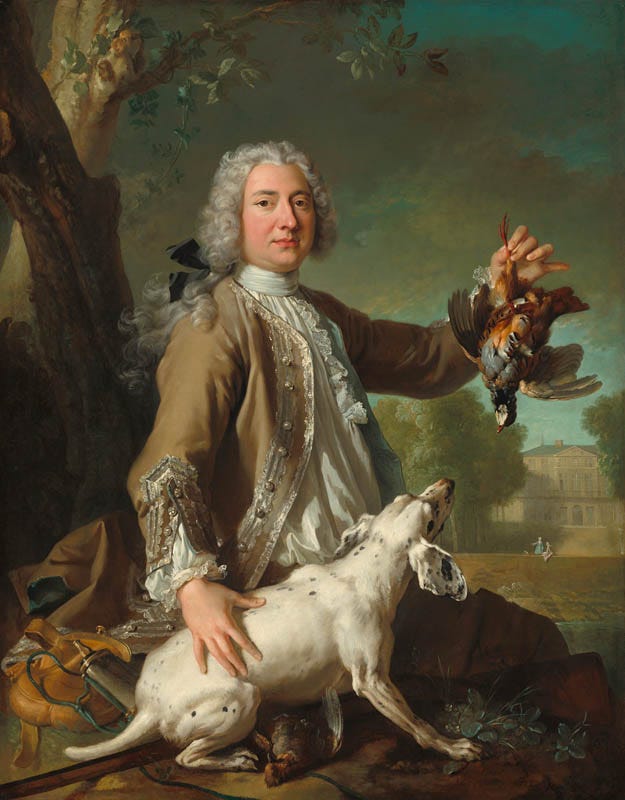
Even more interesting, the fold collar, like one might see on a chore coat today, was used only on a robe or lounge coat. How strange is that? The contemporary collar as we know it, which feels formal to 21st century Westerners, was worn only as nightwear from about 1700 - 1750 -- as pajamas! Behind closed doors only! How odd! See an example below of what I mean.
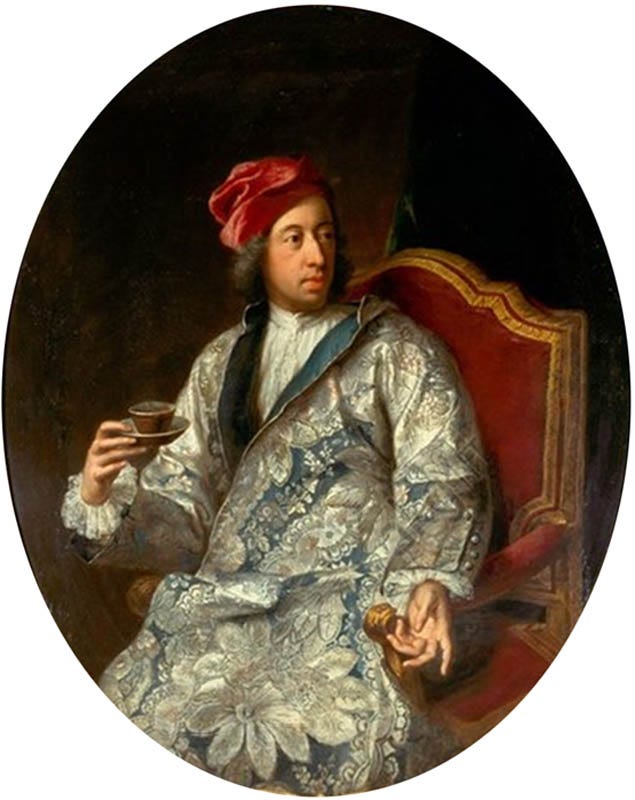
In addition to these house robes with fold collars, banyans, or loose fitting kimono-like garments made from linen or silk and designed to be worn alone in the home, often featured stand collars, which would later become popular in the second half of the century. See an exquisite example below of a banyan made in about 1730.
My hypothesis here is that collars and ruffs were so overdone and associated with the 15th & 16th century pious, hard-nosed individuals such as religious reformers, church leaders and intense Dutch nobles and leaders (you know the ones who appear like goblins hanging in their portrait frames2) that fashionable people were collar fatigued and could only stomach them while at home relaxing in their undergarments.
By 1760, collarless jackets remained popular but in came the stand collar. In England we also begin to see a revival of military tailoring, double breasted jackets and large and high fold collars meant to be stood up in inclement weather or low temperatures.
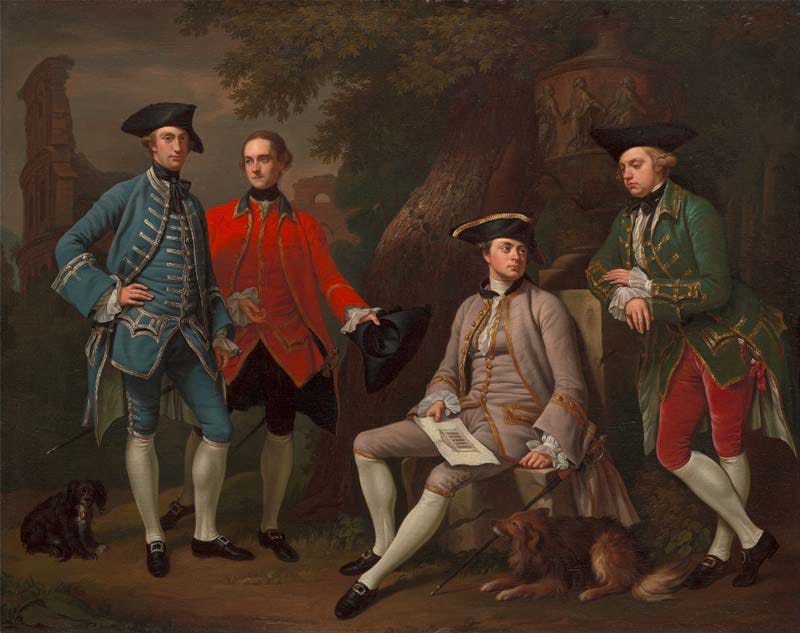
The early 1760s, particularly in England, brought about a variety of collars in the menswear universe. Stand collars, collarless jackets and military attire or military inspired tailoring were all popular and worn by different types of men. Is this when we begin to see the rise of the British dandy? (God knows France was eons ahead of the Brits in male fashion expression) Men had a variety of choice and colors and patterns were used to taste - sort of like salting your food. Perhaps British men were inspired by their native country’s colonizing and exposure to various types of people and cultures as well as the wars that were ensuing because of such?
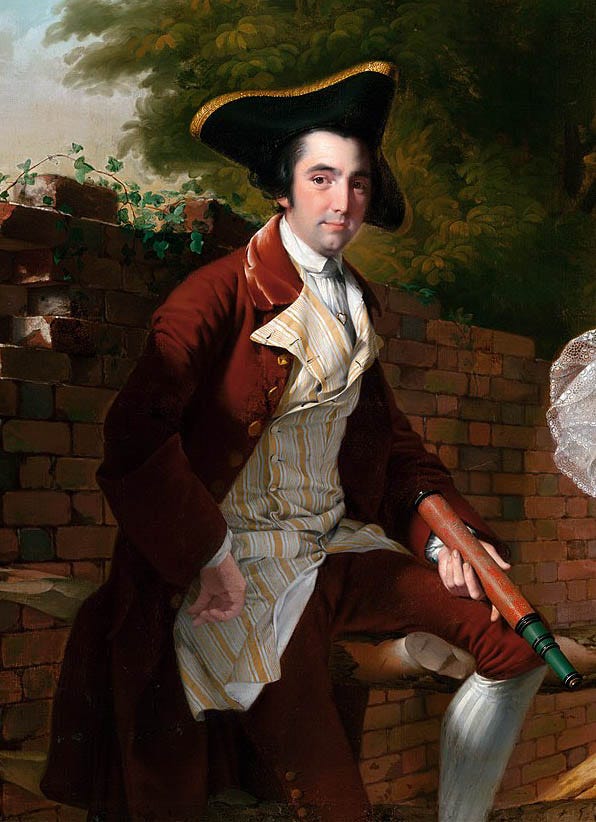
While it makes me giddy to note that men seemed to be enjoying fashion during this time in Europe, let us not forget black buckle shoes, white stockings3 and tricorn hats were as ubiquitous to any daily look as an iPhone is today.


1770 - 1780, the decade menswear becomes divided. Choose your fighter: Flamboyant tall stand collars or strong, thick fold collars.
Now begins a very real divide in menswear setting apart the men concerned with opulence and frippery from those who are serious, the likes of scholars, statesmen, military leaders, great men of business. This seriousness and quieting of menswear styles carries through to today.
See below for an example of our staid and respectable late 18th century gentleman. Shocker: he’s English.
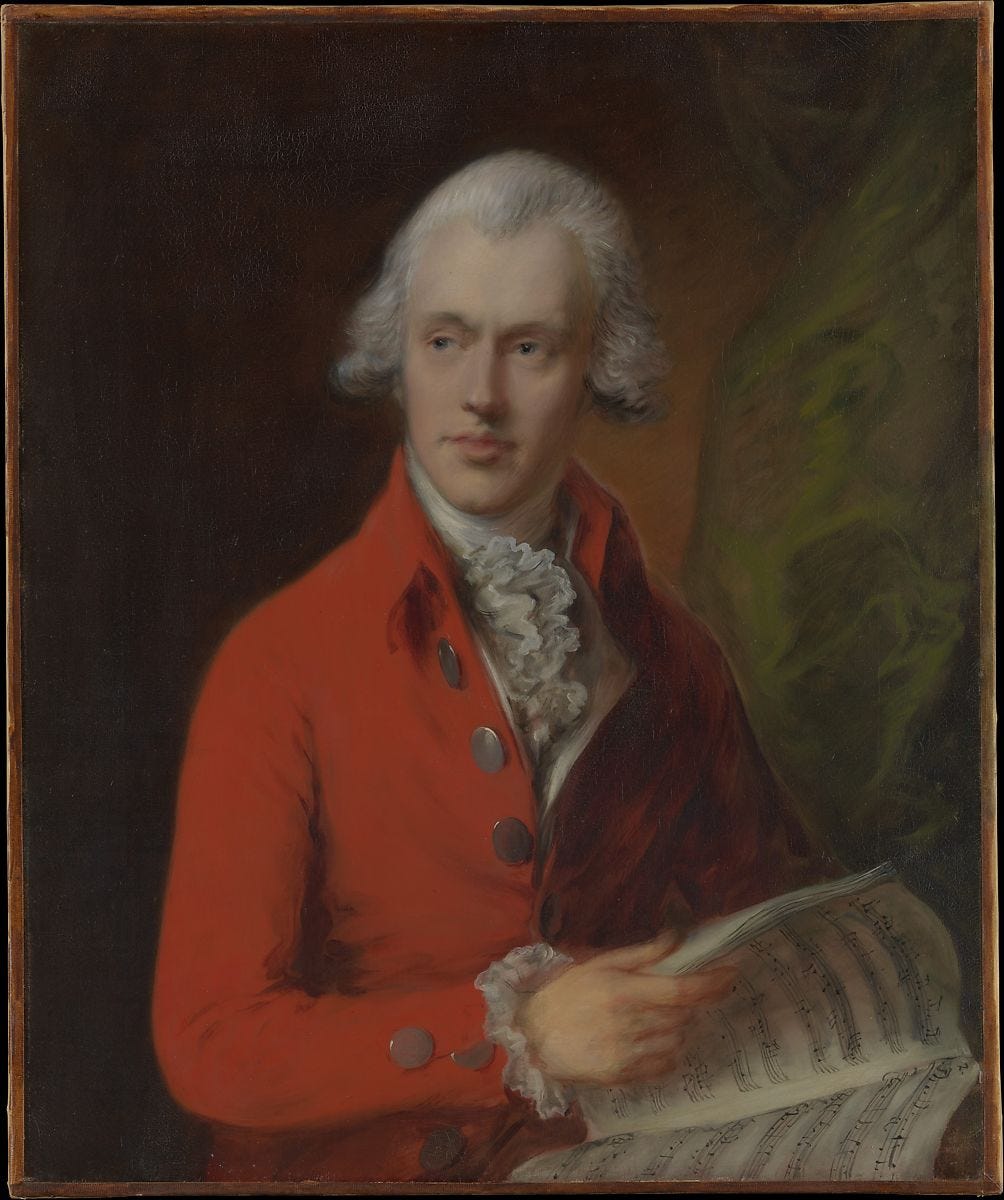
Whereas below, we have a very continental man, the French dandy. Take note of his higher heels, brightly colored and sumptuously trimmed waistcoat. The color combination of his attire is more feminine, like a spring time parade of pastries.
Both men wear powdered wigs and possess social status and an assumed amount of wealth and power, though they’re expressing them in the most different of ways. Both men likely mix in society. One is a peacock, the other a hawk. Which do you find more appealing?
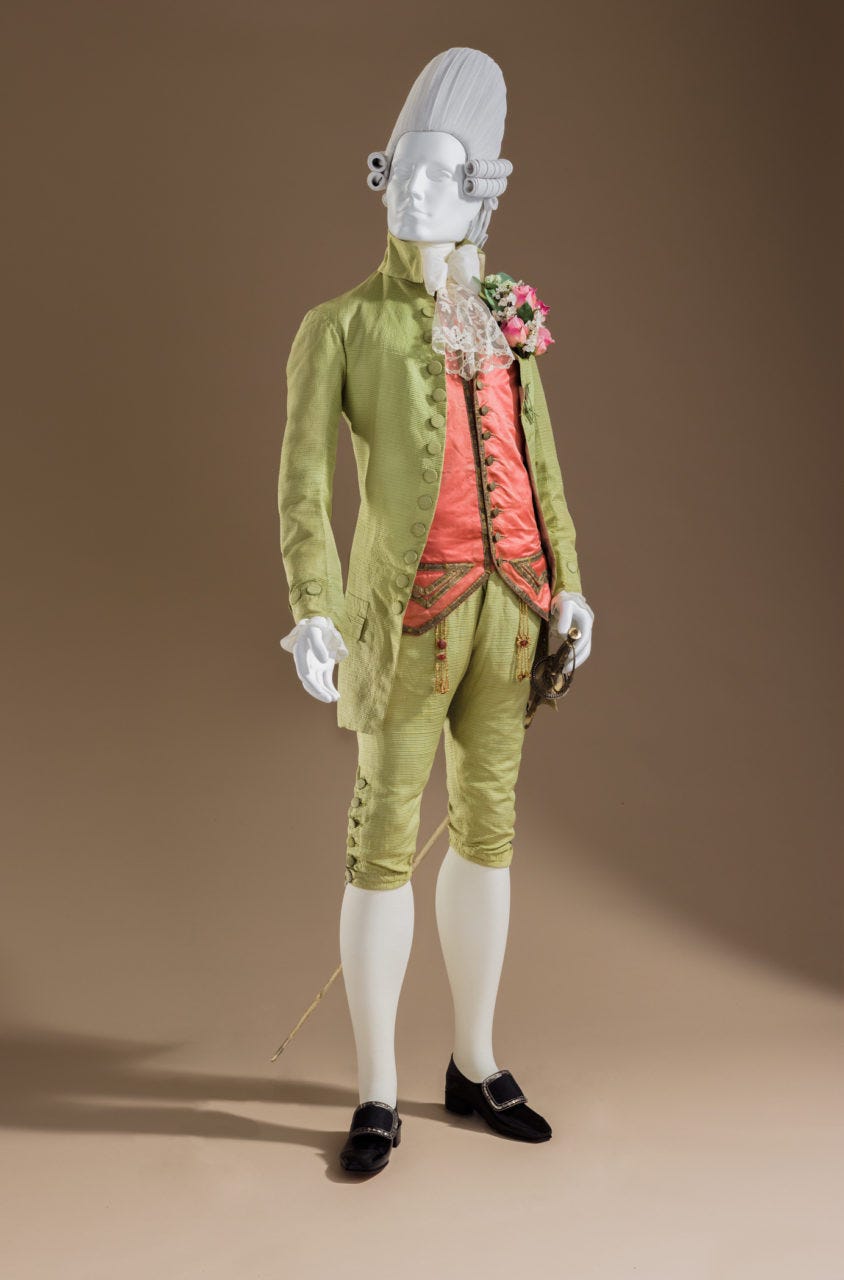
The last 20 years of the decade solidify fold collars as the collar of choice as well as bring another enduring menswear staple: navy blue outerwear.
At the end of the 18th century the French Revolution was underway in Paris, here in the USA our founding fathers were toiling to weave together a modern yet classical democracy while England was in recovery mode post war with America and France but also experienced the beginnings of the Industrial Revolution.
In France, England and America, there is serious economic and political change afoot, and from a fashion perspective most men chose to appear serious and somber in their dress, meeting the moment in Western history. Navy blue and prominent collars become the expected day to day dress of men of varying ranks and economic backgrounds.
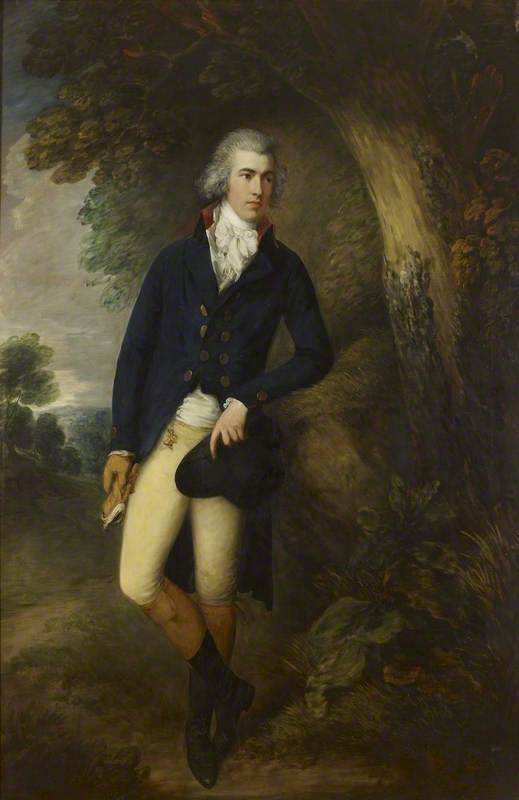

Unless, you happen to be part of the upper classes hanging on to a flagging way of life...We know how this gentleman’s story likely ends. Spoiler: He’s French.
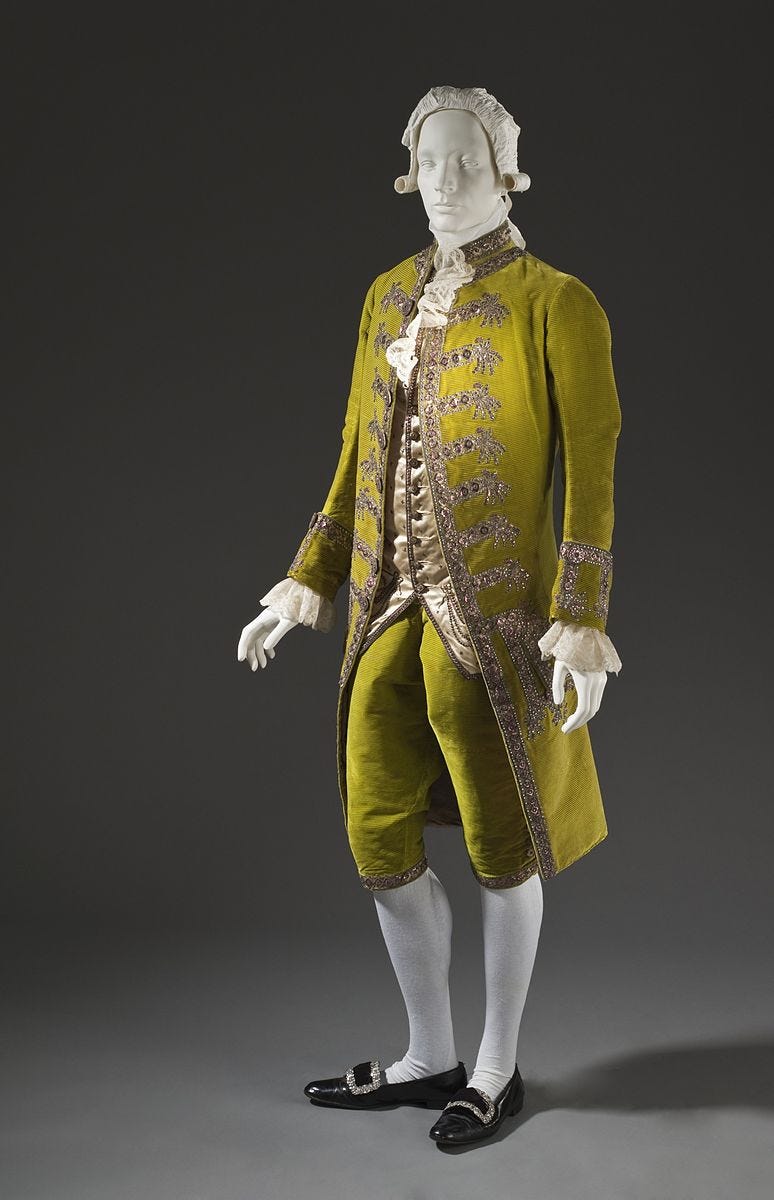
Can you imagine your 18th century boyfriend lamenting that his stockings “have a run?” lol





The bourgeois revolution, it seems, imposed not just drab colours in menswear, but also collars. Thanks for this aperçu.